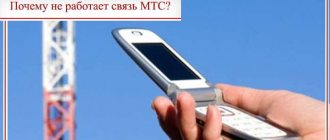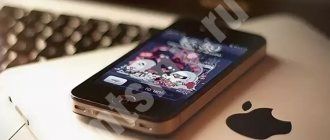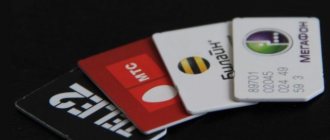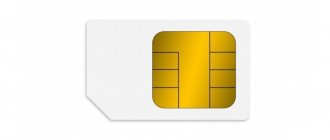How to find out whether 2G/3G/4G will be available in place X (Russia)?
My life experience suggests that coverage maps on operator websites should not always be trusted. At times they slightly embellish reality. How do you know if your phone will work 100% in the places you are going to?
In January of this year, the Ministry of Telecom and Mass Communications took up the issue and created a service that displays information about the quality of signal reception by different operators. You can try it at geo.minsvyaz.ru.
The data is collected by volunteers. Every owner of an Android phone can become one if they install an application for monitoring the quality of communication. On the map you can compare four operators at the same time (selecting them from 14). Lilac color indicates 4G coverage areas, green 3G, and orange 2G.
Fourth generation of cellular communications
At the end of the 2000s, iPhones and Androids began to appear. These smartphones differed from their predecessors in their large LCD display. Now no one wanted to view modest WAP pages. From now on, the built-in components were quite enough for the browser to display a full page without any problems, no matter how heavy it was. But it requires high speed to load it quickly. Only a completely new standard could provide it. Active popularization of 4G, or IMT-Advanced, began in March 2008.
The result of the scientists’ work was two standards: WiMAX and LTE. Now you yourself know which of them is most widespread. The introduction of LTE has made it possible to significantly increase the capacity of each cell, although its coverage area has decreased. Now the minimum data transfer speed was 100 Mbit/s, which is enough for most average smartphone owners. Subsequently, this parameter increased even more. This happened due to the implementation of LTE-Advanced technology. Depending on the category of technology supported by the device, speeds of 400 Mbit/s or even 1 Gbit/s can be achieved!
Unlike previous generations, the LTE standard was originally intended only for packet data transmission. But over time, digital voice transmission also became available - VoLTE technology is responsible for this. The sound quality is much higher than when talking via 2G or 3G networks. However, not all smartphones still support this technology.
How to find out whether 2G/3G/4G will be available in place X (other countries)?
The Ministry of Telecom and Mass Communications is not the first to come up with such an application. For many years in a row, research company Open Signal has been collecting communication information in the same way.
On opensignal.com you can enter an address and find out which operators will receive at this point, what the quality of communication will be and whether LTE will work.
You can also select a country on the map, then an operator from the list and see its coverage area in the selected state.
How can I find out if roaming will work in location X?
You need to go to your operator’s website, find a page with information about your tariff, get to the roaming section, select the country that interests you and find a link to a list of operators with whom roaming agreements have been concluded in a specific country. Then go to opensignal.com and check if any of these operators can reach the addresses you need.
Please note that each operator has its own list of services provided and not every such list includes mobile Internet. It’s also worth checking whether it will catch 3G/LTE on opensignal.
This information will help you decide which operator’s SIM card you should buy upon arrival, whether you can get by with your regular number or whether you need a third option.
Tip #2
Try to always look good.
It is more pleasant for any potential contact to communicate with a well-groomed and neat person than with a slob who has long forgotten what a shower is.
Each of us (even if deep down in our souls) is an esthete. Any person is always drawn to the beautiful or, at worst, to the beautiful. Think about it, or better yet, remember: when you and your friends come to a restaurant or a nightclub, who do you pay your attention to, beautiful people or people who look like “Second Fresh Salmon”?
Wherever you go - just to the store or for a walk in Central Park, to a nightclub or to drink coffee with friends - always try to look 100%, or better yet 120%!
How not to go broke on roaming?
If your operator does not provide services in the right place or you want to save money on communications, then you can think about buying a tourist SIM card. You can buy it once and use it every few years (you may need to throw a few dollars into your account every year). Their tariffs are often significantly cheaper than regular roaming, but not always . This depends on the specific country and operator.
There is no universal answer to the question about the profitability of buying a tourist SIM card. Each situation must be calculated separately, checking the tariff schedule.
Someone will come to the conclusion that with TrevelSim or GoodLine he gets 50% savings, someone will calculate that if the operator connects special roaming options , then the savings are insignificant. If you visit several countries on each vacation, do not repeat yourself and do not stay anywhere for a long time, then an international SIM card will be a profitable solution. And if you hang out in one place for a month, then it’s more profitable to take a local one.
Prices and coverage areas of tourist SIM cards can be viewed on the following websites:
SimTravel EuropaSim GlobalSim GoodLine Teletie SmartSim
Third generation of cellular communications
IMT-2000 (as 3G is commonly called in a professional environment) includes five standards: CDMA2000, W-CDMA, TD-CDMA/TD-SCDMA and DECT. The latter is not a cellular standard, as it is used in home and office wireless telephony. Other standards are used to provide communications to mobile phone owners. They all have similar specifications. Interestingly, the method of operation of such networks was invented in the USSR back in 1935. However, for a long time this technology was used only by the military. It entered the civilian segment only in the mid-1980s, due to the need to develop mobile communications.
The third generation differed from 2G primarily in its increased data transfer speed. If the subscriber stands still, he can download data at a speed of about 2 Mbit/s. At a leisurely pace, traffic is downloaded at a speed of approximately 384 Kbps. In a vehicle, the speed dropped even more - to 144 Kbps.
With the advent of smartphones, the above speeds have become scarce. Therefore, the HSPA standard quickly became popular. It marked the arrival of the 3.5G generation. Cell phones equipped with its support have learned to transmit data at a speed of 14.4 Mbit/s. And that was just the beginning! Subsequently, the standard was improved, resulting in a theoretically achievable speed of 84 Mbit/s. HSPA is based on multi-code data transmission with comparable cell sizes.
Which phone to take on a trip around the world?
What to do if there are no mobile operators working in the place you are interested in?
Be prepared to spend a little. For example, Fedor Konyukhov is always in touch. After all, he has several satellite phones. The leading provider in this area is Iridium. Its coverage area is the entire planet. Prices for new phones start at 75 thousand rubles (the kit includes a charger with adapters for five sockets and a car antenna). A satellite router with the ability to connect no more than five devices will cost 65 thousand. You also need to pay directly for communication services: 1000 minutes of conversation/Internet access will cost 23,800 rubles.
Inmarsat has a slightly smaller coverage area. It will not work at the poles. Equipment for using the network is slightly cheaper than Iridium.
From other operators you can find devices starting from 25 thousand rubles and the tariffs are more affordable. But before purchasing, you need to carefully check the coverage area with the map of your future travels, since in this parameter they lag behind the leaders. For example, Thuraya does not cover the huge (most interesting) northeastern part of Russia.
By the way, the just mentioned provider sells a very interesting thing - an attachment for the iPhone SatSteel (unfortunately, I found offers only for 4 and 4S), which allows you to use satellite communications on your Apple smartphone.
If none of the people you are traveling with have yet purchased a single satellite communication device, then you can save a lot by renting it.
In the absence of cellular communication, it is successfully replaced by the Internet.
Fifth generation of cellular communications
5G development is currently underway. LTE's capabilities in terms of data transmission are quite sufficient. Therefore, when developing a new standard, the greatest emphasis is placed on cell capacity. After all, the number of subscribers is growing more and more. Most of all, 5G will make life easier for the creators of wearable devices and devices integrated into the Smart Home system. It is expected that only in an area of 1 km2 it will be possible to connect one million gadgets to the network! As of early 2021, the new generation is only being tested. It is not clear when we will expect its full exploitation.
How to find out if Wi-Fi is available in location X?
I already wrote about the wigle.net service in the article Where was the Mac?
We track the history of movements while connected to Wi-Fi. Its database includes a quarter of a billion access points around the world. Their location can be seen on the map. It is interesting to look at the statistics by country. One in five hotspots (53 million) are located in the United States. There are 2.5 million of them in Russia, but in Uzbekistan there are only 239 (I’m sure there are more in reality).
How to receive/send SMS online?
You already know how to make free calls via the Internet without me.
And send free messages on operator sites too. Do you know how to receive SMS to a Russian number online? This knowledge will come in handy if one day some site requires you to enter a confirmation code for registration, and you are flying on an airplane or are abroad, leaving your Russian SIM card at home. Or if you need another account on a social network, but you don’t have a second phone.
On onlinesim.ru you can select a Russian operator number, pay for access to it and receive SMS from websites. It will cost 3-15 rubles per message.
You can also use this service to hide your real number. For example, you can set up on your website to forward all calls that come to a selected number to your mobile phone and indicate it in online advertisements.
The topic of organizing cellular communications in unusual conditions is inexhaustible. Many sections of the text above could be developed into a separate article. But I think this small superficial overview is enough. I hope that some of the readers found in it the keys to solving some of their current/future problems and now know in which direction to look for their solution.
(
2 votes, overall rating: 4.00 out of 5)











